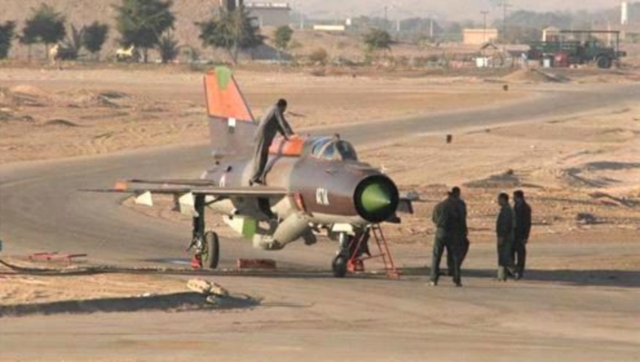 A Syrian MiG-21, flown into Jordan last June by Syrian Air Force Colonel Hassan Hamada, had been upgraded to fly without a pilot and to carry chemical weapons.
A Syrian MiG-21, flown into Jordan last June by Syrian Air Force Colonel Hassan Hamada, had been upgraded to fly without a pilot and to carry chemical weapons.
U.S. experts who examined the plane and questioned the pilot believe Russian engineers helped with the upgrade.
A MiG-21 combat aircraft flown by a Syrian pilot who defected to Jordan in June was found to have been upgraded back in Syria to carry chemical weapons and to fly without a pilot, according to U.S. experts who examined the plane. The experts believe Russian engineers helped convert the plane and that Syria has more of them in its air force.
On June 21, Syrian pilot Hassan Hamada, who holds a rank equivalent to colonel, took off in his MiG-21 from al-Dumair military airport northeast of Damascus and flew to King Hussein Airbase just across Syria’s southern border with Jordan. Upon landing in Jordan, Hamada removed his rank and requested political asylum.
Syria immediately admitted the pilot had defected and called him a traitor. Suspicion arose when Syria put increasing pressure on Jordan to return the plane. After being examined by Western intelligence agencies, the aircraft was discovered to have the ability to employ chemical weapons and fly without a pilot.
Information about the plane’s additional capability was reportedly passed on to U.S. intelligence agencies, which were said to have studied the information and interviewed Hamada. After concluding their examinations, U.S. experts said they believe Russian engineers helped convert the MiG-21 to an aircraft with unmanned aerial capability that could be armed with chemical weapons. Officials at the Pentagon believe additional Syrian aircraft underwent the same conversion, although the exact number is unknown.
Photo: Ammon News
Source: Israel Hayom
